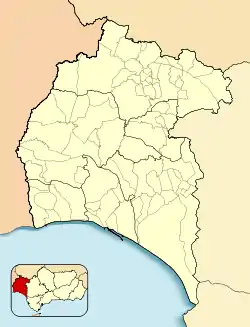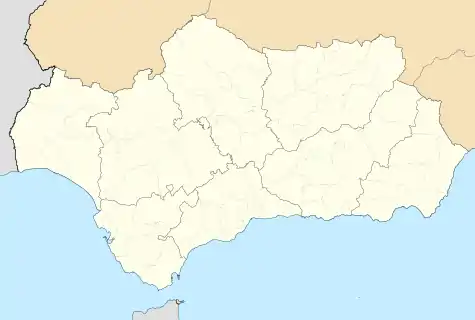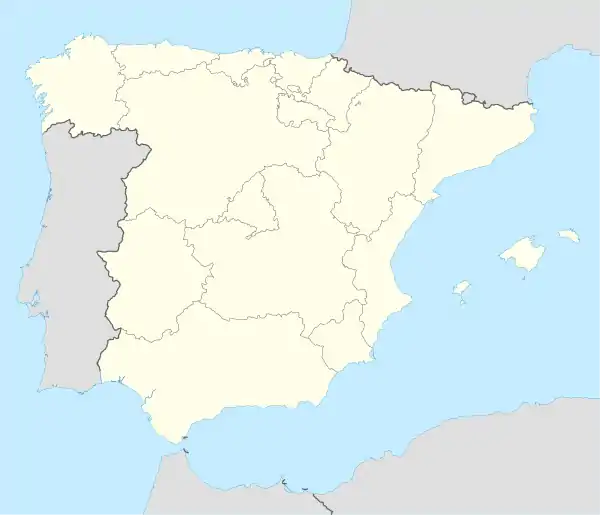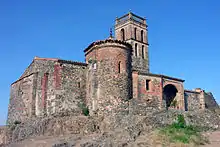Almonaster la Real
Almonaster la Real is a town and municipality located in the province of Huelva, Spain. According to the 2005 census, the city had a population of 1,805 inhabitants.
Almonaster la Real | |
|---|---|
 | |
 Flag  Seal | |
 Almonaster la Real Location in Spain  Almonaster la Real Almonaster la Real (Andalusia)  Almonaster la Real Almonaster la Real (Spain) | |
| Coordinates: 37°52′24″N 6°47′10″W | |
| Country | |
| Region | |
| Province | Huelva |
| Municipality | Almonaster la Real |
| Government | |
| • Mayor | Jacinto José Vázquez López (PSOE-A) |
| Area | |
| • Total | 322 km2 (124 sq mi) |
| • Land | 322 km2 (124 sq mi) |
| • Water | 0.00 km2 (0.00 sq mi) |
| Population (2018)[1] | |
| • Total | 1,837 |
| • Density | 5.7/km2 (15/sq mi) |
| Time zone | UTC+1 (CET) |
| • Summer (DST) | UTC+2 (CEST) |
| Website | www.almonasterlareal.es |
Demographics
| Year | Pop. | ±% |
|---|---|---|
| 1999 | 2,011 | — |
| 2000 | 1,963 | −2.4% |
| 2001 | 1,938 | −1.3% |
| 2002 | 1,898 | −2.1% |
| 2003 | 1,879 | −1.0% |
| 2004 | 1,858 | −1.1% |
| 2005 | 1,805 | −2.9% |
| Source: INE (Spain) | ||
Monuments
Mezquita, the Mosque 10th century

The Mezquita was built from a visigothic basilica from the 5th century, reusing its materials, and is one of the few surviving Spanish rural mosques.
It is an oddly-shaped building, made of brick and stone in a trapezoid shape, probably because of the hilly terrain.
The oration room has 5 naves, whose arches, like in the Mezquita in Cordoba, are perpendicular to Qibla.
The central nave is wider than the 2 nearby, which are in turn wider than the 2 outer naves. The sections of the South flank are wider than the others, suggesting a T shape.
The Mihrab has lost its paint, and looks quite archaic; only the brick and stone is visible.
To the North is the Alminar Square. The mosque probably only had one entrance, in the northernmost section of the second nave from the East.
What little light it would have had would have come in via the patio, the door and 3 narrow or small windows, 2 to the left of the Mihrab and 2 to its right.
In the oration room, 16 undated tombs were found.
When Spain became Christian, many changes were made, including the addition of a central axis in accordance with the new religion. The old door and the North flank were also reconstructed. Despite these changes, the whole building still retains a rustic charm.
References
- Municipal Register of Spain 2018. National Statistics Institute.
External links
| Wikivoyage has a travel guide for Almonaster la Real. |
- Almonaster la Real - Sistema de Información Multiterritorial de Andalucía